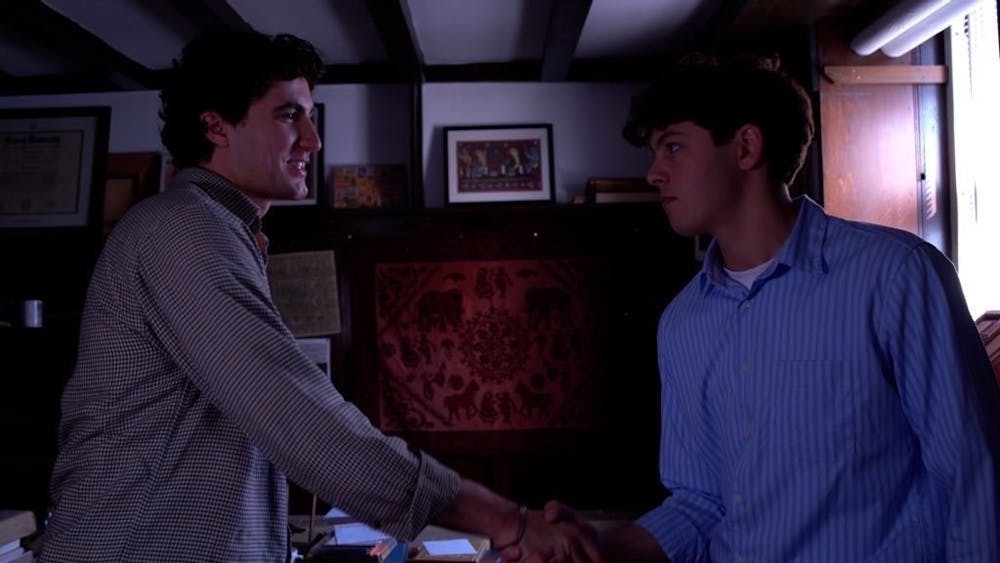“The Ballad of the Tea Table” premiered at the Avon Cinema earlier this month as one of the five student films produced by Brown Motion Pictures this spring.
Written by and starring Loki Olin ’24, a former Herald senior staff writer and Illustrations chief, the film follows protagonist Glenn as he tries to “swindle a young couple” out of a valuable piece of furniture, according to director Aman Singh ’26.
Olin said he drew inspiration for the film from two main sources: “Parson’s Pleasure,” a 1958 short story written by Roald Dahl, and a course at the University titled HIAA 0081: “Architecture of the House Through Space and Time.” Through the class, Olin participated in a research project for the Maddock Alumni Center that allowed him to investigate the various generations-old objects scattered throughout the building.
Olin said he eventually decided to “take some of the narrative elements of ‘Parson's Pleasure’ and put them in this context, in a setting that's like an old colonial home with young people around.”
The alumni center also became the primary shooting location for the film. “It was very serendipitous that we were able to actually shoot in that location because it was where I had the initial idea for the script,” Olin said.
Given the short amount of time they were allowed to shoot in the building, Olin credited Singh for “keeping (the filming process) nice and snappy.”
According to Singh, not every detail in the final film product was entirely faithful to Olin’s original script. “The Ballad of the Tea Table” was initially set in a snowy town, with Singh hoping to take inspiration from the winter landscapes of the 1996 comedy-crime film “Fargo,” but a warm winter forced the cast and crew to adapt their vision. Ultimately, Singh said the film still manages to successfully capture the Western aesthetic of its visual influences.
“The Ballad of the Tea Table” is a “very raw and powerful” story, said the film’s Head of Production Celine Dipp ’25. “A lot of the characters are kind of larger than life.”
Coming from a border town in Texas, Dipp added that she took on this project because she felt excited about the prospect of a BMP film that would give her a “taste of home.”
Olin, Dipp and Singh all recalled that one of their favorite memories from working on the film involved shooting a scene that replicated a car chase. Because BMP does not permit driving in its films out of safety concerns, Singh said that the film’s crew had to work around the regulations to meet the script’s demand without breaking any rules.
Singh added that he did not view these rules as something that would “hamper creativity,” instead finding them to do the opposite.
Olin credited the film’s editors and cinematographers for making the scene look so realistic in post-production. Singh also credited the production designers for making the sets match so well with the vision of the film.
Dipp only has “accolades for our cast and crew who are all so amazing.”
Ultimately, Olin said that he deems the film a success “as long as the audience is reacting,” explaining that it is the viewer’s interpretation that makes a movie what it is.
Singh hopes that audiences will have as much fun watching the film as its actors had starring in it.
All five films produced by BMP this spring can now be streamed online.





